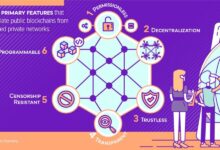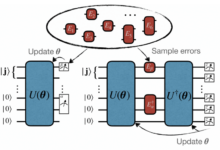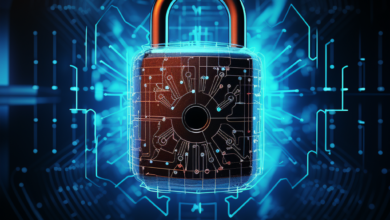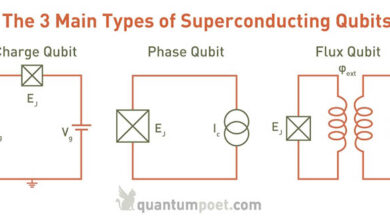IoT and 5G Connectivity A Powerful Partnership
IoT and 5G connectivity are revolutionizing how we interact with technology. The lightning-fast speeds and low latency of 5G are unlocking the full potential of the Internet of Things, enabling a new era of interconnected devices and smart applications. This synergy promises transformative advancements across various sectors, from healthcare and manufacturing to transportation and beyond, but also presents unique challenges.
Imagine a world where self-driving cars communicate seamlessly with traffic infrastructure, smart homes anticipate your needs, and remote medical devices provide real-time patient data. This isn’t science fiction; it’s the rapidly approaching reality enabled by the powerful combination of IoT and 5G. This exploration delves into the technological advancements, applications, security considerations, and societal impacts of this transformative partnership, painting a picture of both the immense possibilities and the crucial challenges that lie ahead.
The Synergy Between IoT and 5G
The Internet of Things (IoT) and 5G cellular technology are a powerful combination, poised to revolutionize numerous industries. 5G’s advancements directly address limitations in previous cellular generations, unlocking the full potential of widespread IoT deployment. This synergy allows for the connection and management of billions of devices, enabling smart cities, efficient industrial processes, and innovative consumer applications.
5G Technological Advancements Enhancing IoT Capabilities
G offers several key improvements over its predecessors, significantly impacting IoT. Enhanced Mobile Broadband (eMBB) provides higher data rates, enabling the transmission of large amounts of data from numerous IoT devices simultaneously. Ultra-Reliable Low Latency Communications (URLLC) guarantees extremely low latency, crucial for real-time applications like autonomous vehicles and industrial automation. Massive Machine Type Communications (mMTC) supports the connection of a massive number of devices, essential for large-scale IoT deployments.
These three key features, eMBB, URLLC, and mMTC, form the foundation of 5G’s ability to support a vastly expanded and more sophisticated IoT ecosystem. Network slicing, another 5G capability, allows operators to create virtual networks tailored to specific IoT applications, optimizing performance and resource allocation.
Limitations of Previous Cellular Technologies and 5G’s Solutions
Previous generations of cellular technology, like 4G LTE, faced limitations that hindered widespread IoT adoption. 4G’s latency was relatively high, unsuitable for many real-time IoT applications. Bandwidth was also limited, making it challenging to handle the massive data volume generated by numerous connected devices. Furthermore, 4G’s power consumption requirements were relatively high, impacting the battery life of IoT devices, particularly those operating in remote locations or using battery power.
5G overcomes these limitations by offering significantly lower latency, higher bandwidth, and improved power efficiency, paving the way for more diverse and extensive IoT deployments.
IoT devices rely heavily on fast, reliable connectivity, which is where 5G comes in. However, processing the massive data streams generated by these devices requires incredibly powerful computing, pushing the boundaries of what’s possible. This is where advancements in Quantum AI become crucial, as discussed in this article on Quantum AI hardware development and its challenges in scalability.
Overcoming the scalability issues highlighted there will be key to unlocking the full potential of 5G-powered IoT networks.
Comparative Analysis of 5G’s Impact on IoT Device Characteristics
The following table provides a comparative analysis of 4G and 5G’s impact on key IoT device characteristics:
| Technology | Latency (ms) | Bandwidth (Mbps) | Power Consumption (mW) |
|---|---|---|---|
| 4G LTE | 50-100 | 10-100 | 100-500 |
| 5G | 1-10 | 100-1000+ | 10-100 |
*Note: These values represent typical ranges and can vary depending on specific network conditions and device capabilities.* For example, a smart meter using 4G might experience noticeable delays in reporting data, impacting real-time grid management. With 5G, this delay is significantly reduced, enabling more precise and efficient energy distribution. Similarly, a self-driving car requires extremely low latency for safe operation; 5G’s capabilities are crucial for this application, while 4G would be insufficient.
The improved bandwidth allows for the transmission of high-resolution sensor data from multiple sources simultaneously, improving the overall performance and reliability of IoT systems. The lower power consumption extends the operational life of battery-powered devices, reducing maintenance and replacement costs.
IoT Applications Enabled by 5G Connectivity
G’s significantly improved speed, lower latency, and increased capacity are revolutionizing the Internet of Things (IoT). This allows for the development and deployment of previously impossible or impractical IoT applications, leading to advancements across various sectors. We’ll explore three key examples of how 5G is unlocking new possibilities in the IoT landscape.
Autonomous Vehicles
Autonomous vehicles represent a transformative application of IoT, heavily reliant on real-time data processing and communication. The vast amounts of sensor data generated by self-driving cars – from cameras and lidar to radar and GPS – require incredibly fast and reliable connectivity to function effectively. 5G’s ultra-low latency and high bandwidth are crucial for enabling this seamless data flow.
The ability to transmit and receive information near-instantaneously is essential for safe and efficient navigation, obstacle avoidance, and coordinated movement within complex traffic scenarios.
- Challenges in Deployment: The widespread availability of reliable 5G coverage remains a significant hurdle. Rural areas and less populated regions may lack sufficient infrastructure for autonomous vehicle operation.
- Security Concerns: The interconnected nature of autonomous vehicles makes them vulnerable to cyberattacks. Robust security protocols are vital to prevent malicious interference and ensure the safety of passengers and other road users.
- Regulatory Hurdles: The legal and regulatory frameworks surrounding autonomous vehicles are still evolving. Clear guidelines and standards are necessary to ensure safe and responsible deployment.
Smart Manufacturing and Industrial IoT, IoT and 5G connectivity
G is enabling a new era of smart factories and industrial automation. The high bandwidth and low latency of 5G allow for the real-time monitoring and control of industrial equipment, enabling predictive maintenance, optimized production processes, and improved overall efficiency. This involves connecting a multitude of sensors and actuators on the factory floor, generating massive datasets that need to be analyzed quickly and accurately for effective decision-making.
- Cost of Implementation: Upgrading existing infrastructure to support 5G and integrating it with legacy systems can be expensive.
- Data Security and Privacy: Protecting sensitive industrial data from unauthorized access and cyber threats is paramount. Robust security measures are needed to safeguard intellectual property and maintain operational integrity.
- Integration Complexity: Connecting diverse industrial devices and systems into a cohesive network requires careful planning and expertise. Interoperability challenges between different systems can hinder seamless data flow.
Remote Healthcare Monitoring
G’s capabilities are transforming healthcare by enabling remote patient monitoring (RPM) on an unprecedented scale. Wearable sensors and medical devices can transmit vital patient data – such as heart rate, blood pressure, and glucose levels – in real-time to healthcare providers. This allows for early detection of health issues, personalized treatment plans, and improved patient outcomes. The low latency of 5G ensures timely intervention in critical situations.
- Data Privacy and Security: Protecting sensitive patient data is crucial. Robust security measures and compliance with data privacy regulations are essential.
- Accessibility and Equity: Ensuring equitable access to 5G-enabled RPM services for all patients, regardless of their location or socioeconomic status, is a key challenge.
- Device Interoperability: Different medical devices and wearable sensors need to be able to communicate seamlessly with each other and with the healthcare system. Standardization and interoperability are vital for effective data exchange.
Security Considerations in 5G-Enabled IoT Networks
The integration of IoT devices with 5G networks presents significant security challenges due to the increased scale, complexity, and speed of data transmission. The inherent vulnerabilities of many IoT devices, combined with the expanded attack surface of a high-bandwidth 5G network, creates a potent combination that requires a robust security framework. This framework must address various attack vectors and vulnerabilities to ensure the confidentiality, integrity, and availability of data within 5G-enabled IoT ecosystems.
Potential Security Vulnerabilities in 5G IoT Networks
The unique characteristics of 5G and the sheer number of interconnected IoT devices introduce several specific security vulnerabilities. These vulnerabilities stem from both the network infrastructure and the inherent limitations of many IoT devices themselves. For example, the massive connectivity offered by 5G increases the potential for denial-of-service (DoS) attacks, while the reliance on cloud services for data processing introduces risks associated with data breaches and unauthorized access.
Furthermore, many IoT devices lack robust security features, making them easy targets for malicious actors.
A Proposed Security Framework for 5G IoT Networks
A comprehensive security framework must incorporate multiple layers of defense to effectively mitigate the identified vulnerabilities. This framework should include strong authentication and authorization mechanisms to verify the identity of devices and users, employing protocols like mutual authentication with digital certificates and secure boot processes. Data encryption, both in transit and at rest, is crucial, utilizing protocols such as TLS 1.3 and AES-256.
Regular software updates and firmware patching are essential to address known vulnerabilities, along with network segmentation to isolate critical systems from less secure components. Intrusion detection and prevention systems should constantly monitor network traffic for suspicious activity, while anomaly detection algorithms can identify unusual patterns that might indicate a cyberattack. Finally, a robust incident response plan is necessary to effectively manage and mitigate security breaches when they occur.
This plan should include procedures for containment, eradication, recovery, and post-incident analysis.
Framework Enhancements for Data Privacy and Cyber Threat Protection
This proposed framework significantly enhances data privacy by encrypting sensitive data both during transmission and storage. The strong authentication and authorization mechanisms ensure only authorized devices and users can access data, minimizing the risk of unauthorized disclosure. The implementation of intrusion detection and prevention systems, combined with anomaly detection, provides real-time protection against common cyber threats, such as DDoS attacks, malware infections, and data breaches.
IoT and 5G connectivity are revolutionizing data collection and processing, but the sheer volume of data demands powerful analytical tools. Understanding the limitations of current processing power is crucial, which is why exploring advancements is key; for instance, check out this article on Exploring the limitations and challenges of current quantum AI algorithms to see how quantum computing might help.
Ultimately, better AI will further enhance the capabilities of IoT devices operating on 5G networks.
For instance, by segmenting the network, a successful attack on a less critical device would be less likely to compromise the entire system. The framework’s proactive approach, incorporating regular updates and robust incident response planning, further strengthens its ability to prevent and manage security incidents, minimizing the impact of potential attacks. The use of digital certificates and secure boot processes reduces the risk of compromised devices participating in the network.
The massive data generated by IoT devices needs the speed and low latency of 5G connectivity to function effectively. Analyzing this data often requires powerful AI, and understanding the differences in processing power is key. To see how this plays out, check out this article on Comparing classical AI and quantum AI performance in specific tasks , which highlights the potential of quantum AI for future IoT applications.
Ultimately, the synergy between 5G and advanced AI will shape the future of smart devices and connected systems.
For example, a smart city infrastructure using this framework could better protect citizen data and critical infrastructure from cyber threats.
Economic and Societal Impacts of 5G-IoT Integration
The convergence of 5G and IoT promises a transformative impact on the global economy and society. The enhanced speed, low latency, and increased capacity offered by 5G networks unlock the full potential of IoT devices, leading to significant economic growth and societal changes across various sectors. This integration is poised to reshape industries, improve lives, and present both opportunities and challenges.The potential economic benefits of widespread 5G-IoT deployment are substantial.
Increased efficiency, automation, and data-driven decision-making across numerous sectors are key drivers of this growth.
Economic Benefits Across Sectors
The manufacturing sector stands to gain significantly from 5G-IoT integration. Smart factories, enabled by connected sensors and machines, can optimize production processes, reduce waste, and improve overall efficiency. Real-time data analysis allows for predictive maintenance, minimizing downtime and maximizing output. For example, a car manufacturer could use connected sensors on its assembly line to detect potential malfunctions before they cause production delays, resulting in significant cost savings.
Similarly, in the healthcare sector, remote patient monitoring using wearable sensors connected via 5G networks allows for proactive intervention, improving patient outcomes and reducing healthcare costs. The transportation sector will also benefit from autonomous vehicles and smart traffic management systems, enhancing safety and efficiency while reducing congestion. Logistics and supply chain management can be optimized through real-time tracking and improved inventory management, leading to reduced costs and faster delivery times.
Consider the example of a large logistics company using 5G-connected sensors to track packages in real-time, allowing for more efficient routing and delivery scheduling.
Societal Implications of 5G-IoT Integration
The societal implications of 5G-IoT integration are multifaceted, encompassing both positive and negative aspects. On the positive side, enhanced connectivity can lead to improved access to information and services, particularly in underserved communities. Smart cities can leverage 5G-IoT to optimize resource management, improve public safety, and enhance the quality of life for citizens. However, concerns regarding data privacy, security, and the potential for job displacement need to be addressed proactively.
The increased reliance on interconnected systems also raises questions about system resilience and the potential for widespread disruptions.
The massive growth of IoT devices, fueled by 5G’s speed and low latency, creates a huge cybersecurity challenge. Protecting this expanding network requires robust encryption, which is threatened by the potential of quantum computing. Learn more about this critical issue by checking out this article on Quantum AI’s impact on cybersecurity and data encryption , as its implications for the future of IoT and 5G security are significant.
Ultimately, securing the IoT ecosystem in the 5G era hinges on adapting to these emerging quantum threats.
The long-term effects on society will likely involve a significant shift towards automation and data-driven decision-making, potentially leading to increased efficiency and improved quality of life but also raising concerns about job displacement, data privacy, and the ethical implications of increasingly autonomous systems. Addressing these challenges will be crucial to ensure that the benefits of 5G-IoT are shared equitably and responsibly.
Job Creation and Displacement Scenarios
The adoption of 5G-IoT technologies will undoubtedly lead to both job creation and displacement. While some jobs will be automated, new opportunities will emerge in areas such as data analytics, cybersecurity, IoT device development, and network management.The following list illustrates potential scenarios:
- Job Creation: Data scientists, AI specialists, cybersecurity experts, IoT developers, network engineers, technicians specializing in 5G infrastructure maintenance and deployment, and specialists in the design and implementation of smart city solutions.
- Job Displacement: Manufacturing workers performing repetitive tasks, transportation workers (e.g., truck drivers) whose jobs may be automated by self-driving vehicles, customer service representatives whose tasks can be automated by AI-powered chatbots, and certain roles in logistics and supply chain management that may be automated through improved tracking and inventory management.
Future Trends and Challenges in 5G-IoT Development: IoT And 5G Connectivity
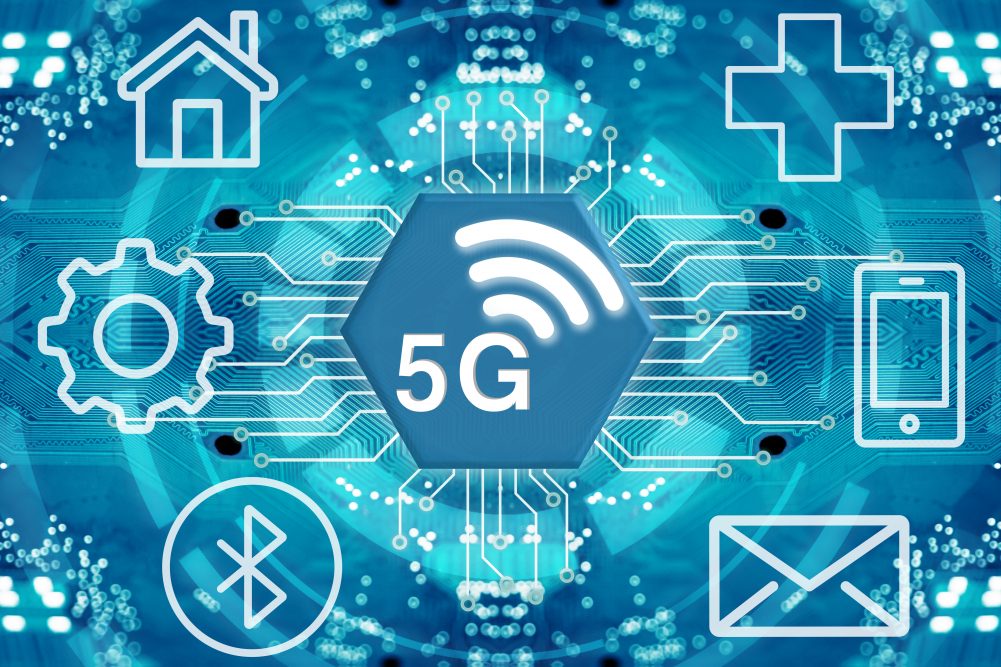
Source: thinkrf.com
The convergence of 5G and IoT is poised for explosive growth, but realizing its full potential requires navigating significant technological hurdles and strategic considerations. The next five years will be crucial in determining the trajectory of 5G-IoT, shaping not only technological advancements but also the economic and societal landscape. Understanding the anticipated advancements and challenges is vital for stakeholders across industries.
Anticipated Technological Advancements in 5G-IoT
Several key technological advancements are expected to significantly enhance 5G-IoT performance within the next five years. These improvements will address limitations in current infrastructure and unlock new possibilities for applications.
- AI-powered network optimization: Artificial intelligence and machine learning will play an increasingly important role in optimizing 5G network performance for IoT devices. AI algorithms can dynamically allocate resources, predict network congestion, and proactively address potential issues, leading to improved efficiency and reduced latency. For example, AI could predict peak usage times in a smart city and allocate more bandwidth to critical applications like emergency services during those periods.
- Advanced Edge Computing: Processing data closer to the source (the “edge” of the network) will reduce latency and bandwidth consumption, critical for real-time IoT applications like autonomous vehicles and industrial automation. The deployment of edge computing resources will enable faster processing and response times, making 5G-IoT more responsive and efficient. Imagine a self-driving car relying on edge computing to instantly react to unexpected obstacles without relying on a distant data center.
- Improved Network Slicing: Network slicing allows operators to create virtual networks tailored to specific IoT applications, ensuring quality of service (QoS) requirements are met. This is crucial for diverse IoT applications with varying needs, such as high-bandwidth video streaming from security cameras versus low-latency control signals for industrial robots. Imagine a smart factory with dedicated network slices for machine control, data analytics, and worker safety systems, each optimized for its specific needs.
Challenges Related to Scalability, Standardization, and Interoperability
Expanding 5G-IoT infrastructure faces significant challenges in scalability, standardization, and interoperability. Addressing these is critical to unlocking the full potential of this technology.Scalability refers to the ability of the network to handle a massive increase in connected devices. Standardization ensures that different devices and systems can communicate seamlessly. Interoperability guarantees that equipment from various vendors can work together within the same network.The sheer volume of devices expected to connect to 5G-IoT networks in the coming years presents a massive scalability challenge.
Without robust and adaptable infrastructure, network congestion and performance degradation are inevitable. Lack of standardization can lead to incompatibility between devices and systems, hindering seamless integration and interoperability. This fragmentation can limit the market’s growth and stifle innovation.
Addressing Challenges and Shaping the Future of 5G-IoT
Addressing the challenges of scalability, standardization, and interoperability is crucial for realizing the full potential of 5G-IoT. Investing in advanced network technologies like AI-powered optimization and edge computing will be essential for improving scalability. Collaborative efforts from industry players to develop and implement common standards will be vital for ensuring interoperability. Furthermore, robust security measures are crucial to building trust and ensuring the reliable operation of 5G-IoT systems.
By proactively tackling these challenges, the future of 5G-IoT development will be characterized by greater efficiency, wider adoption, and increased innovation.
Anticipated Growth of 5G-IoT Connections
Over the next decade, the number of 5G-enabled IoT devices is projected to skyrocket. Imagine a world where smart homes, autonomous vehicles, and interconnected industrial systems seamlessly communicate with each other, generating vast amounts of data that fuels advanced analytics and automation. Smart cities will leverage 5G-IoT to optimize traffic flow, manage energy consumption, and improve public safety.
Precision agriculture will utilize connected sensors to monitor crop health and optimize irrigation, leading to increased yields and reduced resource waste. The growth of 5G-IoT will not be merely a quantitative increase in connected devices, but a qualitative transformation of how we live, work, and interact with our environment. By 2030, billions of devices will be interconnected, creating a hyper-connected world characterized by unprecedented levels of efficiency, automation, and innovation.
Final Review
The convergence of IoT and 5G is poised to reshape our world in profound ways. While challenges related to security, scalability, and standardization remain, the potential benefits—from enhanced efficiency and productivity to improved healthcare and safer transportation—are undeniable. As we move forward, addressing these challenges through robust security frameworks and collaborative standardization efforts will be crucial to unlocking the full transformative power of this technological partnership and ensuring a future where the benefits are shared equitably by all.
Q&A
What is the difference between 4G and 5G in the context of IoT?
5G offers significantly lower latency (delay), higher bandwidth (data transfer speeds), and improved power efficiency compared to 4G, making it far better suited for the demands of many IoT devices and applications.
How does 5G improve the security of IoT devices?
While 5G itself doesn’t inherently improve security, its enhanced capabilities allow for the implementation of more robust security protocols and mechanisms, such as network slicing and advanced encryption, which can better protect IoT devices and data.
What are some potential downsides of widespread 5G IoT deployment?
Potential downsides include increased energy consumption, the potential for increased surveillance, and the risk of job displacement in certain sectors due to automation.
What is network slicing in the context of 5G and IoT?
Network slicing allows 5G networks to be divided into virtual networks, each with its own customized settings for latency, bandwidth, and security. This is crucial for supporting the diverse needs of different IoT applications.


